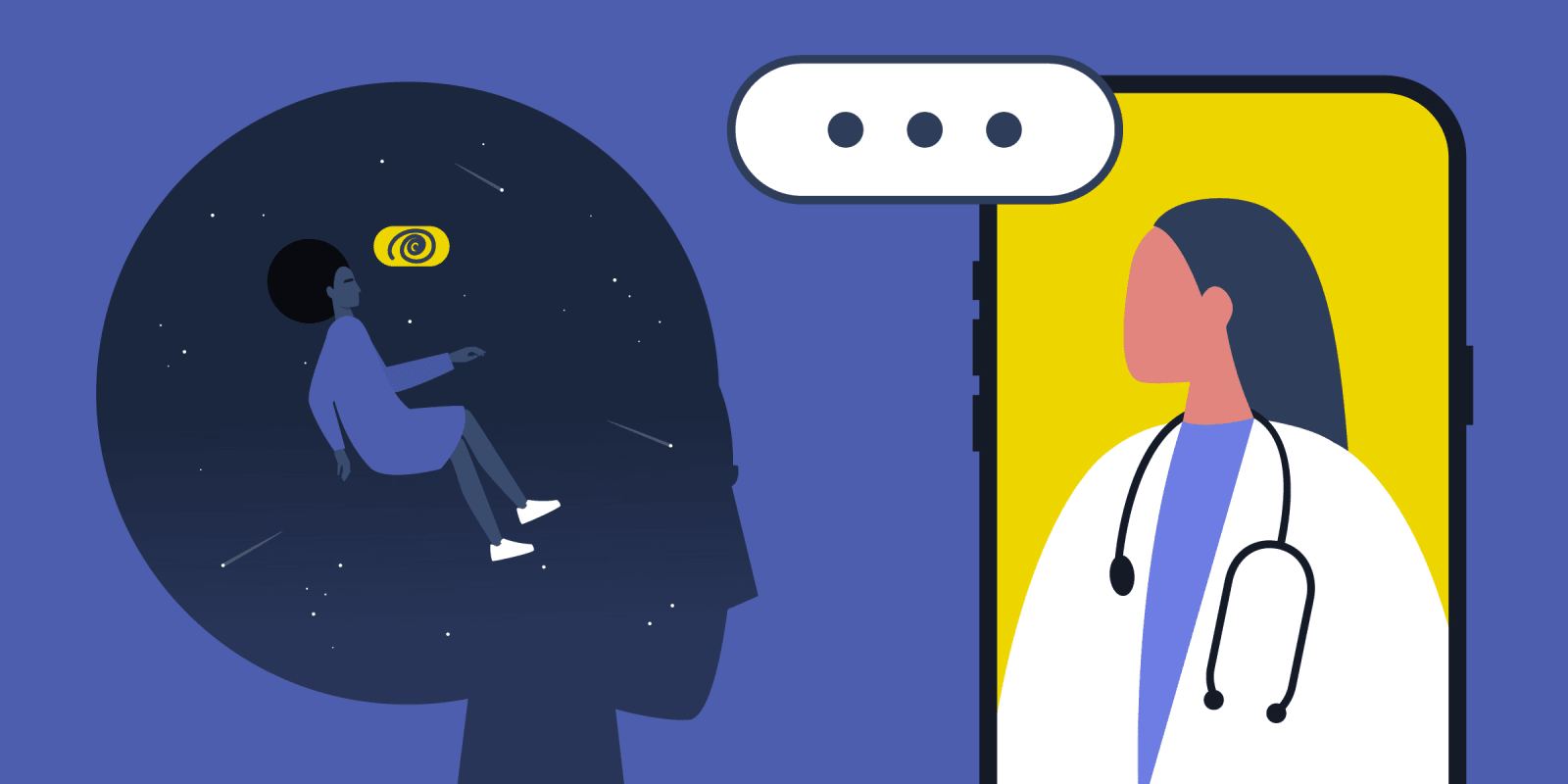Last year, the Kaiser Family Foundation found that four in 10 U.S. adults showed symptoms of anxiety or depressive disorder, a dramatic increase from one in 10 U.S. adults in 2019. Telehealth replaced many in-person mental health visits during COVID-19 lockdowns in an attempt to combat the emerging mental health crisis. Following this trend, many in-person mental health treatments such as ketamine therapy also introduced online offerings. While no replacement for in-person care, online ketamine therapy flourished during the pandemic, with several virtual ketamine clinics prescribing ketamine lozenges alongside a video consultation with a counselor — who is only occasionally a board-certified psychiatrist. In addition, startups dedicated to remote monitoring of ketamine also took root in late 2020. This is a major shift in how mental health treatment is conducted; it may set a precedent for the legalization and therapeutic use of other psychedelic treatments.
In terms of the efficacy of these virtual treatments, research is slim. Few studies focus solely on remote monitoring of ketamine self-administration — but research does show that some patients who initially started with in-office treatments had successful experiences with virtual administration. While many believe that the increased availability of online ketamine therapy is a step toward tackling the current mental health crisis, citing the frequent coverage from news outlets, criticism abounds. Psychiatrists who have been working in the industry are concerned about the limited research behind virtual administration of ketamine — and are likewise wary of the field’s commercialization and widespread marketing to patients who may not have the treatment-resistant mental illness that ketamine is used for in other clinical contexts.
When it comes to administering ketamine to patients, the most common methods among psychiatrists are IV or intramuscular injections. In 2017, the American Psychiatric Association (APA) set rules on the use of ketamine to treat mood disorders, referencing safety measures that must be maintained to reduce the known potential for abuse. Recently, however, there has been an uptick in other routes of ketamine administration, such as nasal spray and lozenges. In 2019, the FDA approved use of a ketamine-derivative nasal spray, esketamine, for treatment-resistant depression — with strict guidelines involving location and supervision. Specifically, they recommended that nasal injection occur exclusively in a certified health care facility and be followed by two hours of supervision.
Most online ketamine providers follow similar steps as traditional ketamine infusion, beginning with a questionnaire to filter out candidates who would be a poor fit for the treatment and followed by a psychiatric evaluation conducted by a clinician. As opposed to traditional ketamine treatment, however, online ketamine treatment does not require patients to be treatment-resistant, and could be patients’ first interaction with psychiatric treatment. This is worrisome to psychiatrists who have been practicing psychedelic-assistant treatment since long before the pandemic.
For the past seven years, psychiatrist Dr. Sara Markey has been offering IV, intramuscular, and oral ketamine treatment in person in her Denver office. Her patients receive ketamine for a variety of different reasons, including depression, PTSD, suicidal ideation, and chronic pain, but they all have one thing in common: nothing else has worked for them. “They aren’t responding to any of the tricks in our toolbox,” Dr. Markey told Doximity, referring to traditional therapies such as SSRIs and psychotherapy.
In Dr. Markey’s experience, “Ketamine diminishes suicidal ideation. It’s good for taking [patients] out of that crisis state” and bringing them into a “therapeutic, dissociative state.” In clinical trials, ketamine has been shown to enhance neuroplasticity of the brain, increase dopamine transmission, and rapidly reduce suicidal ideation, even in seemingly treatment-resistant individuals. Recently, a patient of hers, who had worked with a virtual ketamine clinic, reported to Dr. Markey a distressing experience in which they were unable to reach their virtual clinician either time they took their provided oral dose. The virtual clinician had recommended a much higher dose for the second session, which led the patient to have a panic attack — one made more traumatic by their inability to reach their clinician during the scheduled time.
This scenario is not uncommon. San Diego-based psychiatrist Dr. Jake Hollingsworth, who has been providing ketamine therapy alongside his anesthesiologist wife in their office since 2016, commented, “I don’t feel like [virtual therapy] is a safe thing to do. We’re putting something that can hurt someone into [the patient’s] hands. I don’t think it’s effective. It produces a lot of risks without significant benefits.”
In Dr. Hollingsworth’s office, the risk-benefit analysis is heavily considered. He and his wife’s approach includes only IV and intramuscularly administered ketamine, with no out of office treatments (such as ketamine lozenges or nasal sprays). Each patient who comes to his practice is first screened; those younger than 18 or older than 64; pregnant; or living with serious chronic medical conditions are excluded from the treatment. Once they meet these criteria, Dr. Hollingsworth conducts a general psychiatric evaluation. If the patient is a good fit for ketamine therapy, they will typically begin a course of six treatments over a few weeks, working their way up from the lowest dose. Out of the 7,000 infusions that Dr. Hollingsworth has conducted over the years, he reports that only a handful of patients have experienced adverse reactions like nausea or panic attacks. Nevertheless, all patients have a call button during the infusion and all infusions are done in the clinical setting.
The same cannot be said for online ketamine treatments, in which the patient may have adverse reactions without in-person support from a clinician. Some providers have a section on safety on their website — but without a clinician present, much of the responsibility is shunted onto the patient to ensure that the patient does not have any of the pre-existing conditions that could cause an adverse reaction. This worries Dr. Markey, who shared, “It’s reckless to throw this stuff at a very ill person.”
Furthermore, both clinicians are skeptical about the efficacy of virtual treatments. Dr. Markey queried, “Is there any data to back this [up]? If they can help people that’s great, but if we don’t have any data, it’s a fable.” Dr. Hollingsworth concurred. In reference to a testimonial on a virtual ketamine provider website that claimed, “‘[Receiving virtual treatment] was like getting five years of therapy in just a few sessions’,” he asked, “How can that possibly be true?” A few of his patients have completed virtual programs, he told Doximity, and they “haven’t seen much of a difference.”
Beyond the potential safety risks and uncertainty over value, online therapies also present a financial burden. Dr. Hollingsworth expressed concern about virtual programs’ “profit over patient outcomes,” and Dr. Markey stated, “There’s a profit motive here that overrides safety concerns.” Indeed, a glance at the websites of popular virtual ketamine clinics reveals that none accept insurance, and the cost of a course of treatment can range from $1,000 to $2,750. According to Dr. Markey, this means that “some of these companies are capitalizing on the stigma of mental health care.” She speculated that instead of targeting patients with treatment-resistant mental illness like those she sees in her clinic, virtual ketamine providers target the so-called “worried well,” patients that may struggle with more manageable anxiety and/or depression.
Both doctors also brought up the hope that ketamine treatments would someday be covered under traditional insurance plans. Dr. Hollingsworth explained, “If more payers are involved in ketamine, it would increase accessibility.” As of now, ketamine is largely not covered by traditional insurance, but some employers (such as the soap company Dr. Bronner’s) have begun offering 100% compensated ketamine therapy as an employee benefit. In Dr. Markey’s home state of Colorado, ketamine infusions are covered by Medicaid for disabled and treatment-resistant depression patients. She’s hoping that this is just the start of more ketamine infusion coverage in the state and nation.
While ketamine is the only psychedelic drug available for widespread therapeutic use, there are additional psychedelic drugs on the horizon — including psilocybin and MDMA, which are currently in phase 2 and phase 3 clinical trials, respectively. “It’s a gold rush,” said Dr. Markey, who also conducts clinical trial research on MDMA and LSD outside of her clinical work. Just like the original California Gold Rush, the richest is whoever gets there first.
What are your thoughts on the emerging market of psychedelic medicine? Do you have any patients who have completed online ketamine therapy? Let us know in the comments below.
Dr. Markey is a principal investigator on a study on expanded access protocol for MDMA assisted psychotherapy for PTSD and a principal investigator for MindMed LSD for GAD. These studies are not yet in progress but have been approved. Dr. Hollingsworth has no conflicts of interest.
Image by nadia_bormotova / GettyImages







